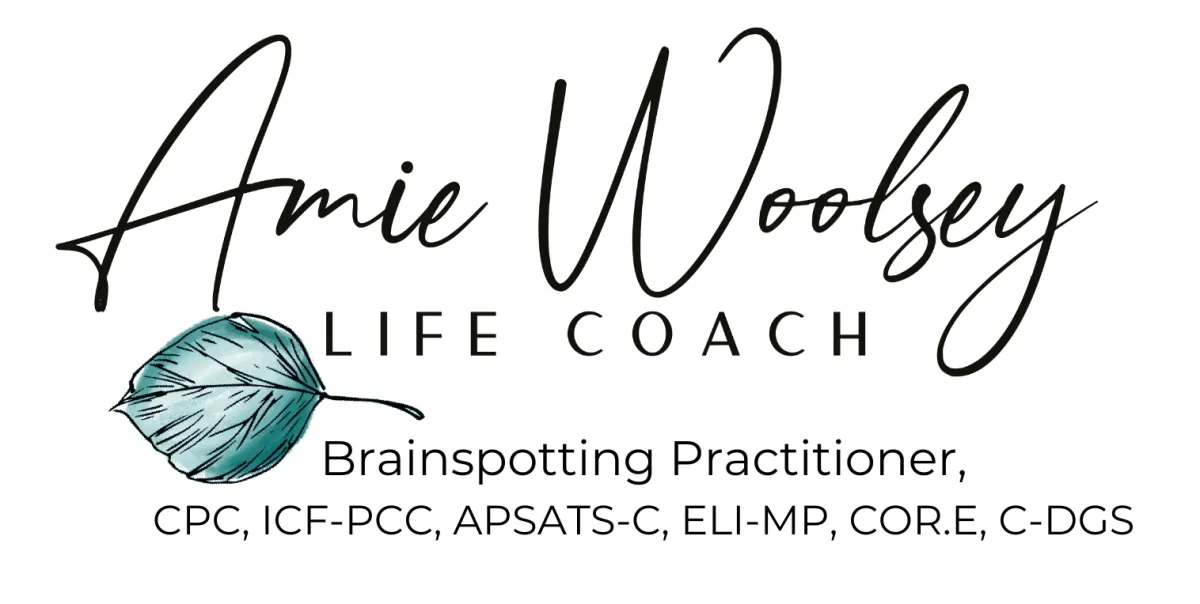
Trauma isn't just something that happens to you, it happens IN you.
Hello and welcome to this space dedicated to your healing journey.
If you have experienced the pain of betrayal, abuse, or the challenges of divorce, you’ve already shown incredible courage.
Brainspotting is a transformative approach I offer to support your holistic healing as you journey back to yourself. It’s a safe, compassionate, and highly effective way to unravel the emotional knots and burdens you’ve been carrying.
Together, we’ll navigate the intricate landscape of your experiences, bring hidden wounds into the light, and nurture the inner strength that has always been within you.
Brainspotting empowers you to rewrite your story—not as a victim, but as a survivor with the power to thrive.
Your healing journey is unique, and I’m here to walk this path alongside you, offering the support and guidance you deserve.
Dive deeper to discover how Brainspotting can help you regain a sense of control, rebuild your self-esteem, and unlock a brighter future.
Your strength is your superpower, and I’m here to help you harness it.
What is Brainspotting?
What is Brainspotting?
Brainspotting (BSP) is a type of therapy that helps people access, process and overcome challenges such as trauma, difficult emotions, grief, anxiety and feeling stuck.BSP incorporates the mind, body, mindfulness tools and eye position to assist in creating change. Through BSP we can reprocess negative events and retrain emotional reactions.
What types of problems can brainspotting help with?
All types of Trauma, including betrayal
Grief
Anxiety
Anger
Impulsive behaviors
Substance use
Alcoholism
Phobias or fears
Performance (including creative and physical)
Brainspotting uses specific eye positions to locate, access, and release unresolved material stored in the brain and body. Here’s how it works:
The eyes are an extension of the brain. When you look into someone’s eyes, you are essentially seeing the part of their brain that meets the world. The eyes are directly connected to the midbrain and subcortical regions, which are responsible for trauma, emotions, survival responses, and memory, through the optic nerve.
The brain devotes significant energy to visual processing. It uses the eyes to scan the outside world for information. What Brainspotting discovered is that the brain also uses the eyes to access information inside itself and within the body.
Brainspotting works with the deep brain and nervous system by directly accessing the autonomic and limbic systems, both of which are part of the body’s central nervous system. Because of this, Brainspotting is considered a physiological tool that can create profound emotional, psychological, and physical change.
How does brainspotting work?
How does brainspotting work?
Brainspotting (BSP) works through accessing your limbic system. A trained (BSP) practitioner will help you find a brainspot eye position, which is directly related to activating the issue deep within the brain ( limbic system)
This works by scanning your visual field to determine the areas you feel most activated physically in your body. Another way to describe a brainspot is the system in your brain holding onto the emotional memory. The brainspot is accessed by holding the eye position while you continue to focus on the specific situation and body/sensory experiences coming up during the process. This stimulates a deep healing process in the brain and central nervous system by stimulating and activating the body’s natural ability to heal itself from trauma. Sitting through the discomfort allows the brain and body to do this work often lowering perceived levels of action significantly by the end of a session.

“Whatever the client was experiencing changed. Images and memories came more quickly. Emotions and body experience went deeper and moved on more rapidly and easily. Clients also got to observe the process while they were in it. The process was fascinating and still is.”
― David Grand, Brainspotting: The Revolutionary New Therapy for Rapid and Effective Change
Bottom-Up vs Top Down Approaches to Therapy
Brainspotting is a somatic-based psychotherapy that uses a bottom-up approach. Whereas talk therapies utilize a top-down approach, Brainspotting accesses the somatic activation related to issues, which travel up from the peripheral nervous system (in the body) into the spine and then brain stem/midbrain. The midbrain houses the limbic system where our survival responses, traumas, emotions, memories, and motor coordination (in order to respond to threats and safety) are held. The midbrain processing of trauma is crucial as it is the site where traumas and a variety of emotional and physical conditions are held. The neocortex (frontal lobe), is the newest part of our brain and is the site of rational thought, linear processes, critical thinking, logic, sequencing, language, and judgment. The neocortex has little to do with regulating emotions while the limbic system and midbrain plays a crucial role in regulating emotions.
Talk therapies access the more neocortical areas of the brain and language. This is often times why talk therapy can take a long time to adjust behaviors and many clients find it challenging to change how they feel or experience the world when they are struggling. Talk therapy isn’t easily able to access the part of the brain (midbrain) that actually works with shifting emotional (and thereby their corresponding physiological states). It can sometimes feel like you are trying to shove interventions down the frontal lobe to reach the subcortex (i.e.- When a person is depressed and you try to give them directions to go for a walk, eat healthy, reach out to others, etc.) It can be difficult for the client to follow through on these directions depending on the severity of the emotional dysregulation in the midbrain, even if they want to follow your recommendations.
Ideally, the midbrain and frontal lobe are in bidirectional communication with one another, however, with trauma and other stressors, this communication can be disrupted, leading to a variety of mental health conditions and unwanted behaviors and ailments.
Before your brainspotting session
Before your brainspotting session
Full Brainspotting sessions will be 90 minutes so plan accordingly. Why 90 minutes? This allows your body to really process the activation that is showing up. It’s natural to move in and out of the body during a session- some more than others- so it takes time for the body to move stuck trauma.
Schedule your Brainspotting session at a time when you are able to relax and go about the rest of your day calmly.
Plan ahead, so there is time for relaxation and/or self-care after your appointment.
You’ve done some hard work, so we want you to be able to take care of yourself after.
Make sure that you have water with you at your session.
Put all devices on ‘Do Not Disturb Mode” to help your processing space
preparing for your online bsp session
preparing for your online bsp session
Interestingly enough, Brainspotting can also be done online. There are a few additional items that you will need for your online Brainspotting session. Here is the list of items that you will want to have nearby for online Brainspotting:
A laptop AND phone or device for bilateral music. Music needs to be connected to a separate device than the computer.
Headphones connected to phone or separate device for bilateral sounds. (Disconnect bluetooth from computer so you can hear me from computer and then your music will be from the earbuds connected to your phone)
Bilateral music ( download available with link below)
Scarf or beanie to cover on eye
Quiet space free from distractions to hold space for your processing
Tissues
Water

what happens in a brainspotting session?
Finding & Working from Activation
Once you’ve determined where in your body you feel this activation (some people report tingling sensations, pain in their stomach, tension in their shoulders, pressure on their chest, etc.) your brainspotting practitioner (BSP) will likely ask you to rate the intensity of this sensation on a scale of 0 – 10 (10 being most intense). This gives us a baseline to work with so that we know where we started.
Finding The Brainspot
Once we determine if we are working from activation or a resource spot, your BSP will then assist you in finding the brainspot. She will use a pointer and scan your visual field both horizontally or vertically by moving the pointer up and down while also being attuned to unconscious cues in your facial expressions, eye movements and body movements. When working from activation, we are looking to find the spot where you are most activated or heightened. When working from a resource spot, we are looking for the place where you feel most calm. Once the spot is located, your BSP will ask you to focus your gaze on that spot by keeping your eyes on the pointer while you process.
,
music can help you process
In brainspotting, bi-lateral music can help stimulate processing. It works by stimulating both sides of your brain through sound. Please have a pair of individual headphones as you will have them in during the session at a low decimal. If at anytime the music feels too activating, just let me know.
Please click the link below to access the bilateral brainspotting session music. * Test before using to make sure you don't have commercials interrupting the processing.
Download BioLateral Session Music HERE If you have Spotify account
Download BioLateral Session Music HERE If you dont have Spotify account
BioLateral Session Music HERE YouTube Link

after your brainspotting session
Drink water. A lot of people report feeling thirsty after Brainspotting. Make sure to drink water after your appointment and stay hydrated.
Make time for movement. After your session, it can be helpful to go for a quick walk or to engage in some form of enjoyable movement. Take care of yourself!
Make time to relax and engage in self-care! You’ve just done a lot of hard work! Some people feel tired after Brainspotting, so be sure to allow for rest. Engage in healthy forms of self-care after your appointment.
Remember: Your brain will still be processing even after your Brainspotting session has ended. This can show up in different ways for people, so it’s important to know that this is normal. This is one of the cool things about Brainspotting in that your body continues to work on healing, even when you’re not in session with your provider.
it's working for you
It's essential to recognize that feeling like the session is not working or experiencing moments of doubt is a common part of the healing process, especially when dealing with trauma. These feelings don't necessarily indicate that progress isn't being made. In fact, they are often signals that important emotional material is emerging for processing. Be compassionate and patient with yourself during this process, because it’s always working FOR you, when you are the CHOOSER.
Book your Brainspotting consultation today to see if you are ready for this this resource
brainspotting videos and psychoeducation


Facebook
Instagram
Youtube